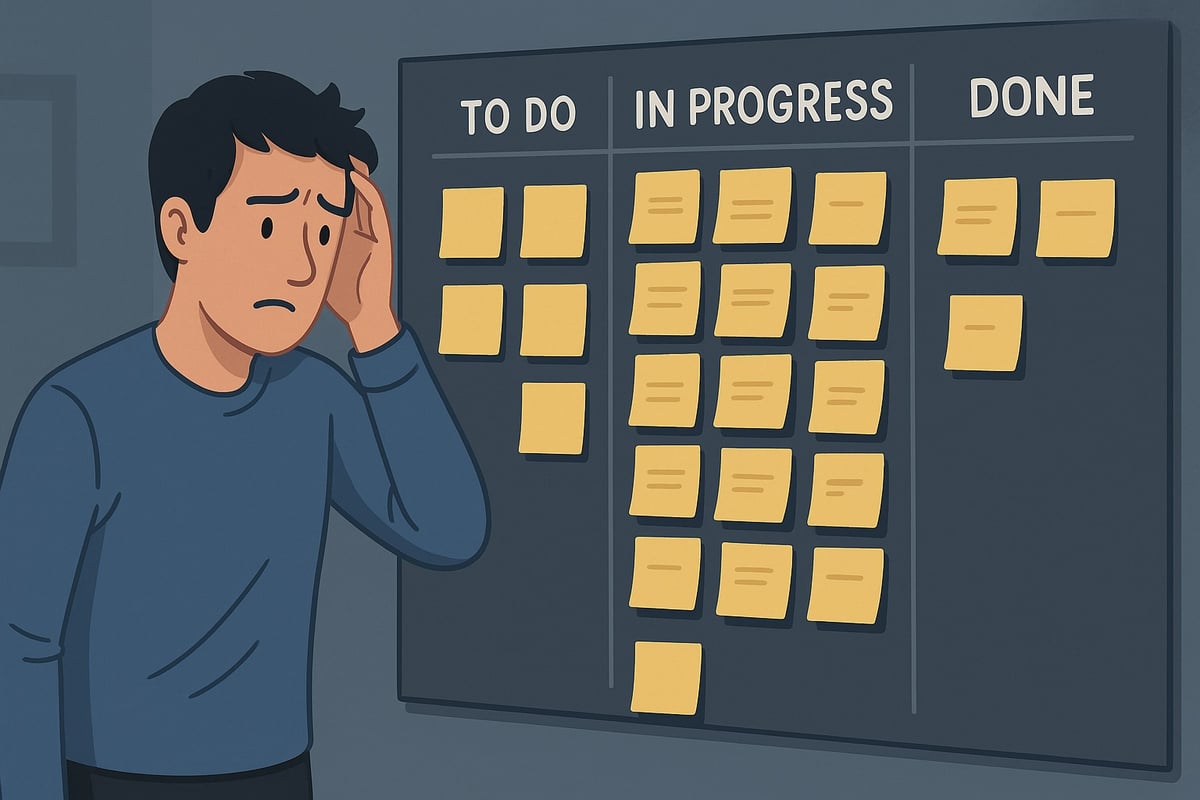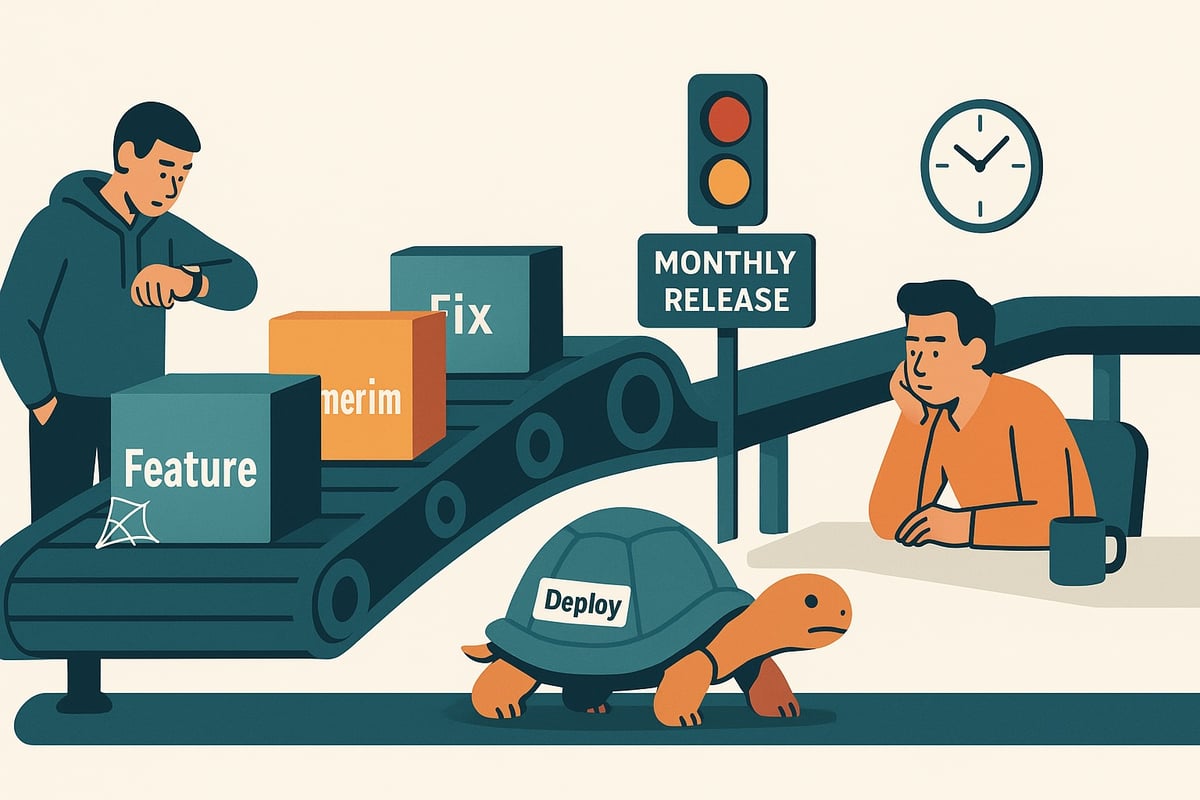A startup founder recently told me about their hiring plan: one front-end developer, one back-end developer, one DevOps engineer. They had 12 customers and a simple web app. I asked one question: “Are you building for Netflix scale or your actual scale?” The silence that followed was deafening.
Here’s the pattern I see constantly: companies with 20 employees structuring their engineering teams like they’re Facebook. They split simple features across three developers, create handoff processes worthy of NASA, and then wonder why shipping takes months instead of days.
90% of web development teams should be full-stack. Period. The specialization playbook works at Meta scale. For everyone else, it’s organizational theater that kills velocity.
The Hidden Cost of Splitting Developers
1. The Context Catastrophe
When you split a feature across specialists, you create a game of telephone. The product manager explains to the back-end developer, who builds an API based on assumptions. The front-end developer interprets those APIs differently. By the time everyone realizes the mismatch, you’ve burned a week.
Research shows that handoffs between teams add 25-50% to development time. That’s not a process problem, it’s a structure problem.
2. The Blocking Bottleneck
I watched a team recently where the front-end developer sat idle for three days waiting for an API endpoint change. The back-end developer was heads-down on another priority. Three days of dead time because we decided one person can’t write both TypeScript and Python.
When full-stack developers hit a blocker, they unblock themselves. When specialists hit a blocker, they update Slack and wait.
3. The Ownership Void
Split ownership is no ownership. When the feature breaks, the front-end developer blames the API. The back-end developer blames the UI implementation. The customer blames your company.
Teams with end-to-end ownership ship fewer bugs than teams with split responsibilities. When one person owns the full stack of a feature, excuses disappear.
Why Smart Companies Make This Mistake
The logic seems sound: “Google has specialized roles, so should we.” But here’s what they miss, Google has +180,000 employees and systems serving billions. You have 50 employees and thousands of users. Copying organizational structures from companies 1000x your size is like wearing a suit of armor to a track meet.
Even at massive companies, innovation happens in small teams. The iPhone wasn’t built by Apple’s 150,000 employees, it was built by a small team that owned everything end-to-end.
The Full-Stack Advantage
Speed Through Autonomy
Full-stack developers don’t wait for handoffs. They see a problem in the API while building the UI? They fix it immediately. No tickets, no meetings, no blocked work.
One fintech startup cut their feature delivery time from 6 weeks to 10 days by moving to full-stack teams. That’s over $100,000 of additional value delivered per month.
Clearer Thinking Through Complete Context
When developers understand the full system, they make better decisions. They don’t over-engineer APIs for imaginary use cases. They don’t build UIs that the back-end can’t support. They build what actually needs to be built.
Business Alignment Through Ownership
Full-stack developers think in features, not layers. They care about user experience, not just code quality in their slice. This alignment is worth more than any architectural purity.
Your 30-Day Full-Stack Transition
Week 1: Assess Your Real Needs
- Count your handoffs per feature
- Calculate time lost to blocking
- Identify which developers already work across the stack informally
Week 2: Start Small
- Pick one feature owned end-to-end by one developer
- Measure cycle time compared to split ownership
- Document what breaks (usually nothing)
Week 3: Expand Ownership
- Assign 2-3 more features to single owners
- Provide learning resources for stack gaps
- Celebrate shipped features, not perfect architecture
Week 4: Make it Permanent
- Restructure teams around features, not technologies
- Adjust hiring to prefer T-shaped developers
- Stop apologizing for not being “enterprise-ready”
The Bottom Line
Your 5-person startup doesn’t need the same structure as YouTube. Your 50-person scale-up doesn’t need Facebook’s org chart. What you need is developers who can ship complete features without playing telephone.
The industry will tell you specialization equals professionalism. The reality? For 90% of companies, specialization equals slower delivery, more bugs, and less ownership.
Here’s my challenge to you: Pick one feature currently split across multiple developers. Assign it to one full-stack developer. Measure the difference in cycle time. I guarantee it’s at least 40% faster.
Are you structuring your team for your actual needs or your imaginary scale? Hit me up on LinkedIn – I’d love to hear if you’re building for reality or fantasy.
I help engineering teams structure for velocity, not vanity. If your handoffs are killing your speed, let’s talk.






